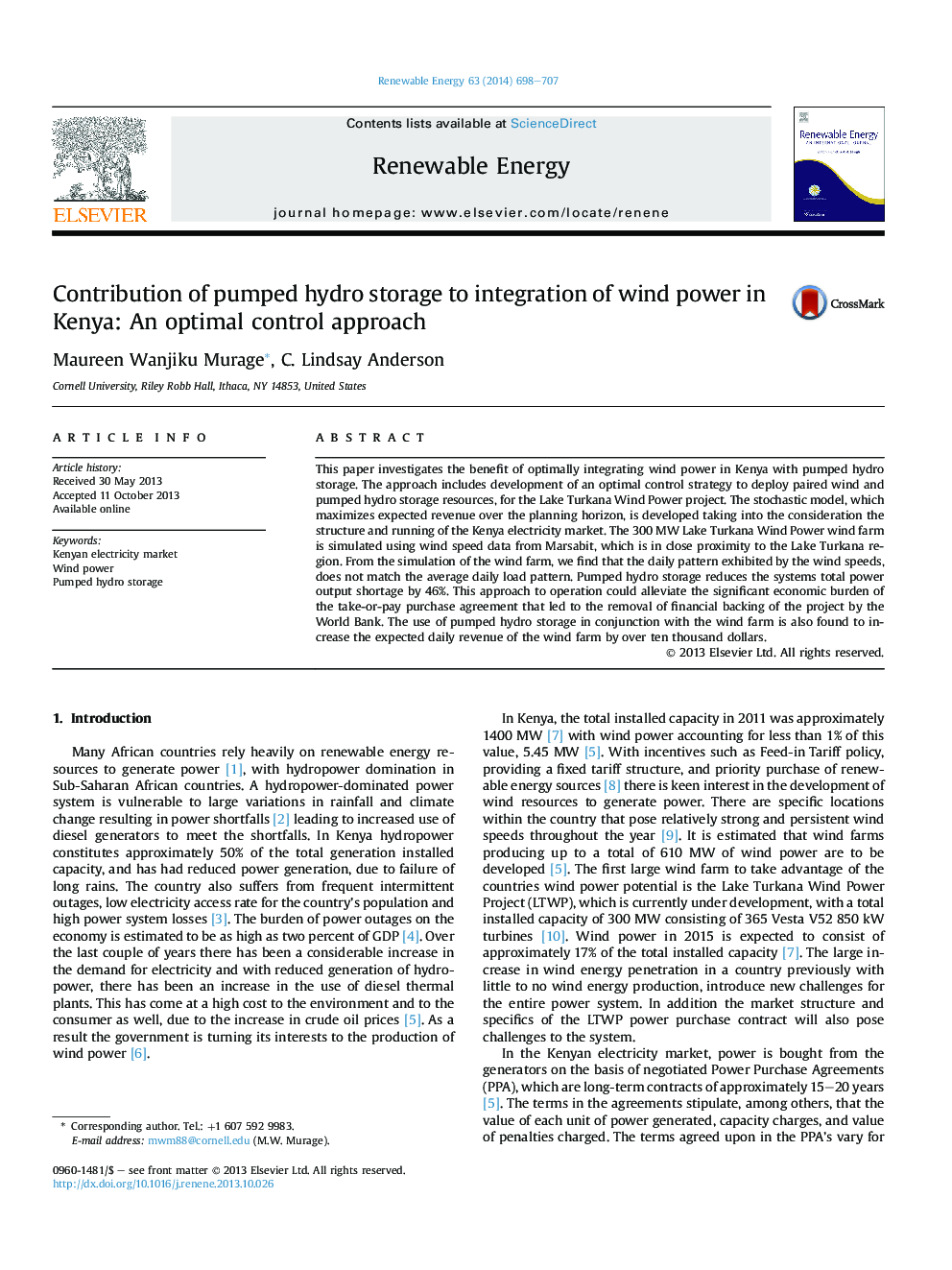| Article ID | Journal | Published Year | Pages | File Type |
|---|---|---|---|---|
| 6769167 | Renewable Energy | 2014 | 10 Pages |
Abstract
This paper investigates the benefit of optimally integrating wind power in Kenya with pumped hydro storage. The approach includes development of an optimal control strategy to deploy paired wind and pumped hydro storage resources, for the Lake Turkana Wind Power project. The stochastic model, which maximizes expected revenue over the planning horizon, is developed taking into the consideration the structure and running of the Kenya electricity market. The 300Â MW Lake Turkana Wind Power wind farm is simulated using wind speed data from Marsabit, which is in close proximity to the Lake Turkana region. From the simulation of the wind farm, we find that the daily pattern exhibited by the wind speeds, does not match the average daily load pattern. Pumped hydro storage reduces the systems total power output shortage by 46%. This approach to operation could alleviate the significant economic burden of the take-or-pay purchase agreement that led to the removal of financial backing of the project by the World Bank. The use of pumped hydro storage in conjunction with the wind farm is also found to increase the expected daily revenue of the wind farm by over ten thousand dollars.
Keywords
Related Topics
Physical Sciences and Engineering
Energy
Renewable Energy, Sustainability and the Environment
Authors
Maureen Wanjiku Murage, C. Lindsay Anderson,
